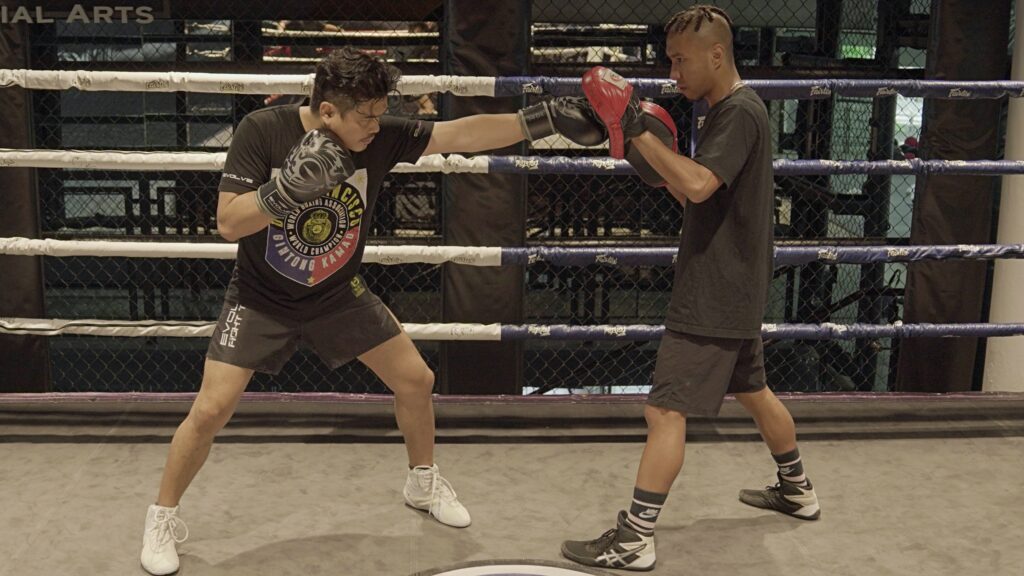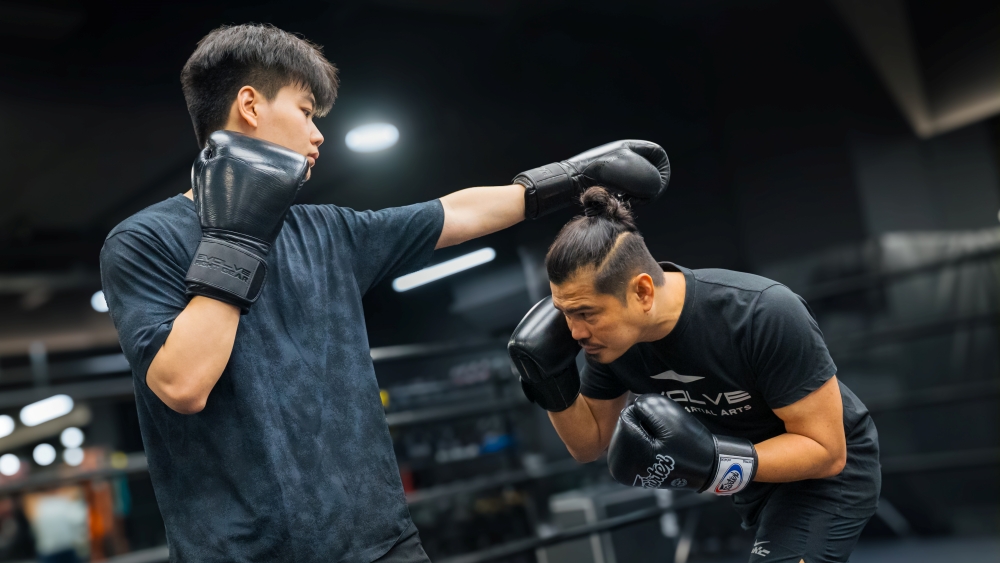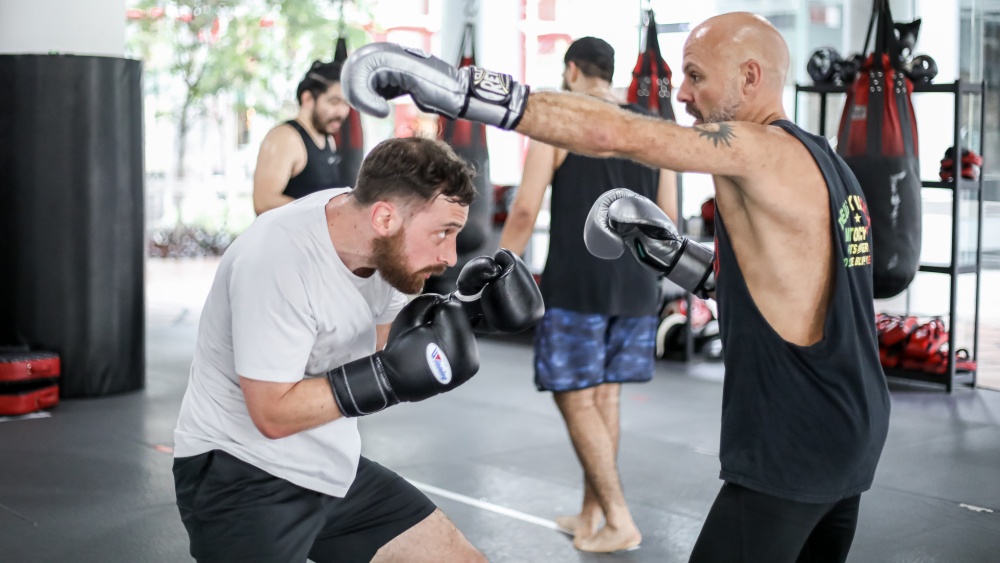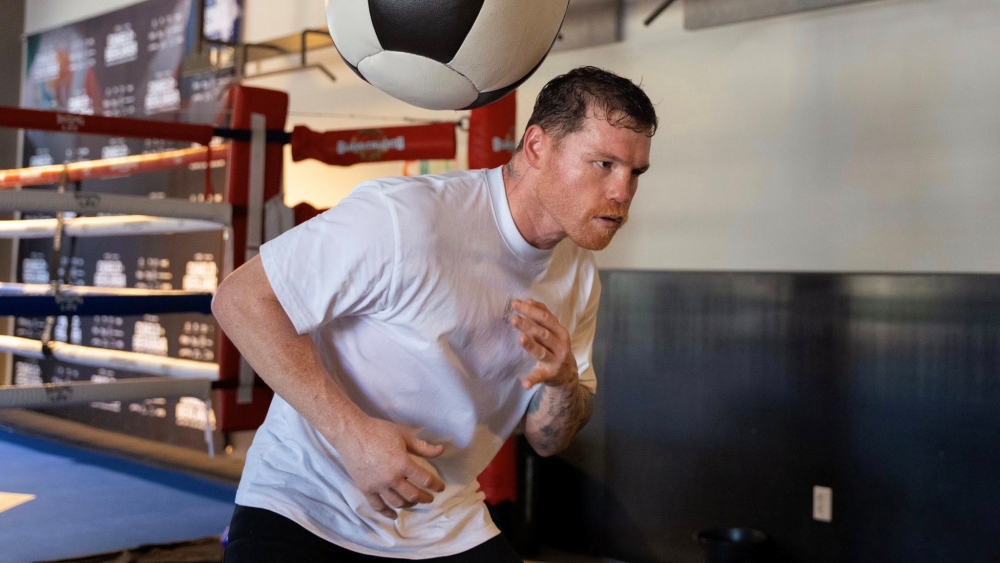The jab is undoubtedly one of the cornerstones of striking, regardless of your chosen combat sport. Boxers, Nak Muay, and MMA fighters use the jab for a myriad of reasons, from establishing range to even scoring knockdowns and knockouts. While the jab is the first punch every fighter learns, it is often the last one mastered. Today, Evolve Daily is pleased to share a guide on how to throw a stronger and more powerful jab.
Clean Technique
The first step to perfecting your jabs is to ensure that you have an effective fighting stance. Depending on your combat sport, your stance will vary, but there are many aspects that overlap. In general, you want your feet approximately shoulder width apart and your body slightly bladed away from your opponent. Your weight should be split between your legs evenly, or with slightly more weight on your back leg. This weight distribution allows you freedom of movement in any direction and makes it possible to rotate efficiently into your punches and evasive movements. Your lead shoulder should be slightly higher than your rear shoulder; this will also help you keep your weight from shifting forward and overcommitting while throwing your jab. The vast majority of boxing all-time greats use this weight distribution in their stance. The video above shows Coach Tom Yankello explaining this concept further.
Once you have a solid fighting stance, you can start to practice throwing your jab. One key aspect to keep in mind is that the jab, and any punch for that matter, is not a push, it is a rotational strike. When you are in your stance, your lead shoulder should be off at a forty-five-degree angle from your opponent. As you throw your jab, your lead shoulder twists slightly to line up with your opponent. Practice this rotation with just your shoulders without actually throwing the jab to ingrain the mechanics. Once you are comfortable with the shoulder rotation mechanics, add footwork by stepping with the rotation. Be sure to keep your lead foot pointed forward toward your opponent as you practice this jab step. After you are used to both the shoulder rotation and footwork mechanics, add the actual jab. To throw the jab, extend your lead arm and rotate your inwards as far as you can inwards towards the end of your punch. This rotation of your wrist will align your index and middle knuckles to make contact when your jab lands. To add speed and power to your jab, think about pulling your rear shoulder back. This will prevent you from pushing your jab and add more pop to your punch. As you jab, keep your lead shoulder raised slightly; this detail is crucial as your lead shoulder will protect you from any counterpunches while also hiding your rear hand’s position. As you can see, the jab is a complex punch that takes many hours of training to master. Watch the above demonstration by WBA Boxing World Champion Drian Francisco on how to throw a proper jab.
Shadowboxing is one of the keys to perfecting your jab. You don’t need any equipment and you can improve all aspects of your jab. Shadowboxing is also where you perfect your technique and prevent bad habits, like overcommitting or telegraphing, that can be formed from heavy bag work. One effective way to drill your jab through shadowboxing is to imagine an opponent in front of you as you circle them while throwing your jab. You can download a round timer on your phone and set it for three minutes, with a one-minute break in between each round. See how many rounds you can move around your opponent while throwing jabs before your stamina drops. This is also a great way to improve your cardio for combat sports!
Another drill to develop your jab through shadowboxing is to practice your jab in a mirror. With this drill, you don’t have to imagine anyone in front of you, you are your own opponent! Standing in front of a mirror in your fighting stance, throw jabs aiming at your own chin or solar plexus. This greatly helps to improve your accuracy and mechanics as you are isolating the punch itself and focusing on a visual target. Olympic boxer Tony Jeffries demonstrates using a mirror for shadowboxing in the video above.
The heavy bag is an essential tool for increasing the power of your jab. Regardless of the weight of the heavy bag, you will be able to practice putting more power into your jab as you throw it. When drilling your jab on the heavy bag, be sure to use footwork to circle the bag. Against a live opponent, you will need to move your feet in order to land the jab and practicing this on a heavy bag will prevent you from developing any bad habits. You can circle in either direction; in general, you want to circle away from your opponent’s rear hand to avoid their power punches.
The double end bag is another powerful tool to develop a stronger and more powerful jab. A large portion of the jab’s power comes from balance and fluidity. Too much heavy bag work can lead to you shifting too much weight into your jab, leaving you exposed to your opponent’s counters. The double end bag balances your routine by giving you less resistance for your punch and forcing you to move your feet or head to avoid return fire. If you’re new to the double end bag, the video above is an introduction to the double end bag by Olympic bronze medalist Tony Jeffries.
If you have access to training partners, drilling with them is one of the best ways to replicate landing your jab on a live opponent. One drill that is particularly useful is a boxing tag drill. This can be done with or without gloves. The aim of the drill is to use an open hand and tag your partner’s shoulders or thighs to simulate a punch to the head or body. This can be done using all punch types; but if you want to really improve your jab, have your opponent use any type of punch while you stick to just the jab. Lomachenko and other Eastern European boxers use this type of drill to establish skill against a live partner without risking the damage of constant sparring.
The jab is the most important punch, and developing a stronger and faster one will increase your skill level greatly. Try these training methods yourself and let us know how they work for you!
You may also like:

















